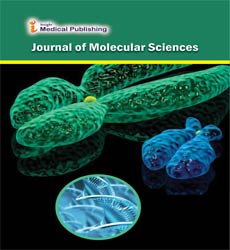A Generalized Description of Nanotechnology
Faith H A Osier*
Centre of Infectious Diseases, Heidelberg University Hospital, Heidelberg, Germany
*Corresponding author: Faith H A Osier, Centre of Infectious Diseases, Heidelberg University Hospital, Heidelberg, Germany, E-mail: FOsier@kemri-wellcome.org
Received date: July 05, 2021; Accepted date: July 19, 2021; Published date: July 26, 2021
Citation: Faith H.A. (2021) A Generalized Description of Nanotechnology. J Mol Sci 5: e004.
Copyright: © 2021 Faith H A. This is an open-access article distributed under the terms of the Creative Commons Attribution License, which permits unrestricted use, distribution, and reproduction in any medium, provided the original author and source are credited
Introduction
Nanotechnology, also shortened to nanotech, is the use of rely on an atomic, molecular, and supramolecular scale for industrial purposes. The earliest, widespread description of nanotechnology referred to the specific technological aim of precisely manipulating atoms and molecules for fabrication of macro scale merchandise, additionally now referred to as molecular nanotechnology. A more generalized description of nanotechnology became ultimately set up through the national Nanotechnology Initiative, which described nanotechnology as the manipulation of depend with at least one size sized from 1 to a hundred nanometers. This definition reflects the truth that quantum mechanical consequences are crucial at this quantum- realm scale, and so the definition shifted from a selected technological purpose to a research class along with all varieties of studies and technology that deal with the unique homes of remember which occur beneath the given size threshold. It’s far consequently common to see the plural form "nanotechnologies" in addition to "nanoscale technologies" to refer to the broad variety of research and packages whose commonplace trait is size. Scientists currently debate the destiny implications of nanotechnology. Nanotechnology can be able to create many new materials and devices with a sizeable variety of applications, which includes in nanomedicine, nanoelectronics, biomaterials power production, and purchaser products. However, nanotechnology raises a number of the identical problems as any new era, which include issues approximately the toxicity and environmental effect of nanomaterials, and their capability outcomes on worldwide economics, in addition to hypothesis approximately diverse doomsday scenarios. Those concerns have led to a debate amongst advocacy businesses and governments on whether or not unique law of nanotechnology is warranted. Numerous phenomena end up reported as the dimensions of the device decreases. Those consist of statistical mechanical outcomes, as well as quantum mechanical effects, for instance the "quantum length effect" in which the electronic properties of solids are altered with great discounts in particle size. This impact does not come into play by going from macro to micro dimensions. However, quantum effects can grow to be enormous whilst the nanometer length variety is reached, usually at distances of a hundred nanometers or much less, the so-referred to as quantum realm. Additionally, a number of physical (mechanical, electrical, optical, and so forth.) residences trade whilst as compared to macroscopic systems. One instance is the boom in floor region to extent ratio changing mechanical, thermal and catalytic houses of substances. Diffusion and reactions at nanoscale, nanostructures substances and nanodevices with speedy ion transport are commonly mentioned nanoionics. Mechanical properties of nanosystems are of interest in the nanomechanics studies. The catalytic interest of nanomaterials also opens capability risks in their interaction with biomaterials. Materials reduced to the nanoscale can display special residences as compared to what they showcase on a macro scale, enabling specific packages. as an example, opaque materials can turn out to be transparent (copper); solid materials can flip combustible (aluminum); insoluble materials might also grow to be soluble (gold). A material consisting of gold, that's chemically inert at everyday scales, can serve as a robust chemical catalyst at nanoscales. A lot of the fascination with nanotechnology stems from these quantum and surface phenomena that be counted reveals at the nanoscale.
Open Access Journals
- Aquaculture & Veterinary Science
- Chemistry & Chemical Sciences
- Clinical Sciences
- Engineering
- General Science
- Genetics & Molecular Biology
- Health Care & Nursing
- Immunology & Microbiology
- Materials Science
- Mathematics & Physics
- Medical Sciences
- Neurology & Psychiatry
- Oncology & Cancer Science
- Pharmaceutical Sciences
